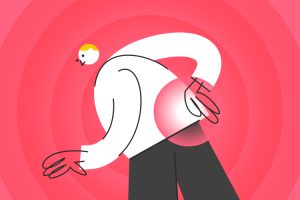The Role of Mitochondria in Aging and Disease
Biologist David Sinclair on alphaproteobacteria, reactive oxygen species, and why the nucleus and the mitochon...
What are the questions and methods of neuroeconomics? What are the brain systems responsible for our decision-making process? How to create experiments to study decision-making in risk situations? These and other questions are addressed by neuroscientist Jan Engelmann (Radboud University).
Neuroeconomics is a very recent scientific endeavor that seeks to understand how we make decisions. In particular, how our biology supports and constrains decision-making. What I mean by this, is how our brain processes decisions, and the types of computation that go into decision-making. By constraints I mean the type of limitations that our neuro-system imposes on decision-making. There a lot of things we cannot do. For instance, if we have a lot of choice options we cannot consider all of them in our computations. Even if we consider just simple decision-making, it is relatively a complex process, compared to other things that are studied in cognitive or affective neuroscience. Decision-making involves multiple stages, and they include at a minimum forming a perceptual representation of the choice base. So the kinds of things that we are making decisions about, we have to be able to represent them and understand what they are.
These questions have been for quite some time now, in different fields and different disciplines of science. They include psychology, behavioural economics, and cognitive and affective neuroscience. But in each field these decisions have been approached from a different angle, and using very different methodologies. What neuroeconomics does for the first time, it offers an interdisciplinary approach using methods and viewpoints and theories from all of these different fields, which gives a new perspective on these types of questions. Obviously, one of these perspectives being, how the brain processes these types of decisions that we are interested in? So this gives the researcher access to multiple methodologies, such as tasks from behavioral economics that have been developed and are very well established over the time, but also methods from neuroscience.
There are many new developments in this field. Many other fields have started joining neuroeconomics. So people in psychiatry are now looking at how patients with psychiatric disorders such as depression and anxiety are making decisions, which is a very important thing because making decisions is one of the biggest problems in these types of populations. Many other techniques are being used, such as TMS, that I talked about earlier, and TDCS to look at the causal involvement of particular brain systems in decision-making. Finally, pharmacological manipulations are being used to up or down regulate entire transmitter systems in the brain, to try to understand their involvement in decision-making. So there is a lot of research that is being developed at the moment, and there is an exciting future for research in neuroeconomics.

Biologist David Sinclair on alphaproteobacteria, reactive oxygen species, and why the nucleus and the mitochon...

Psychologist Mark Lumley on behavioral dysfunction, categorizing pain, and the effects of psychotherapeutic tr...

Neuroscientist Onur Güntürkün on depersonalization, the rubber hand illusion and how synchronous nerve impulse...